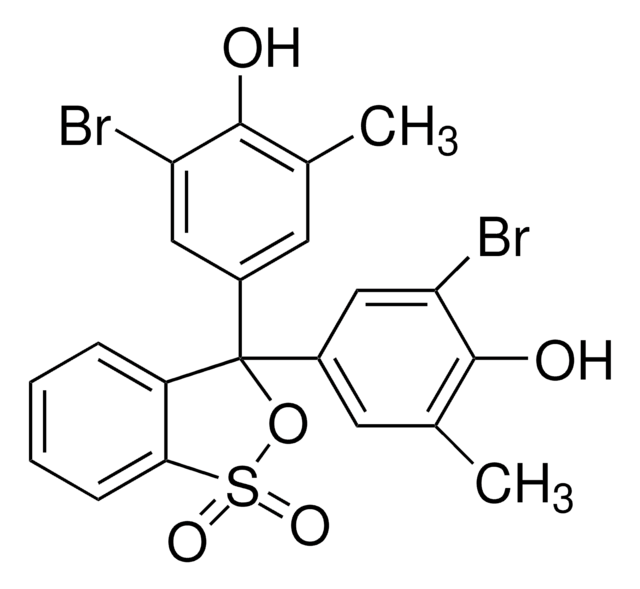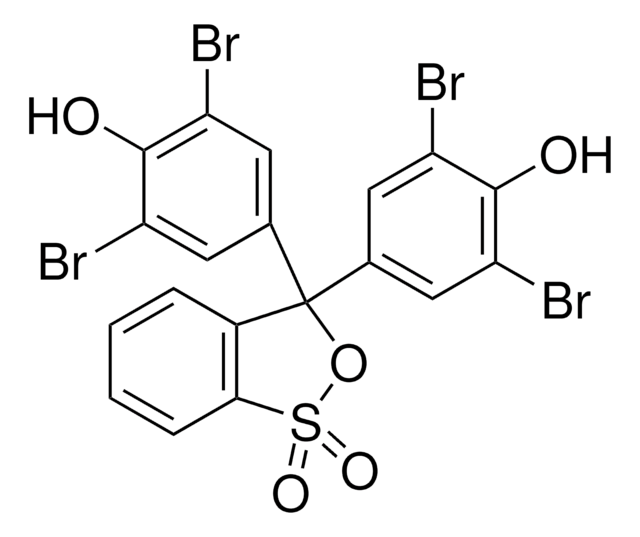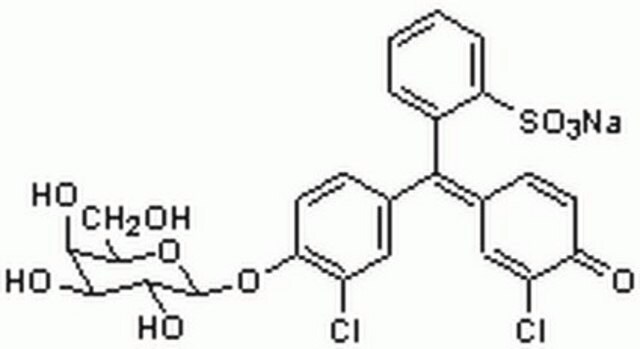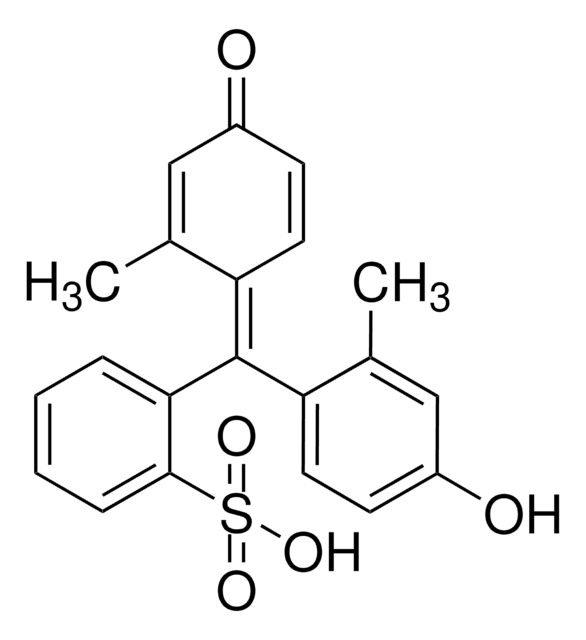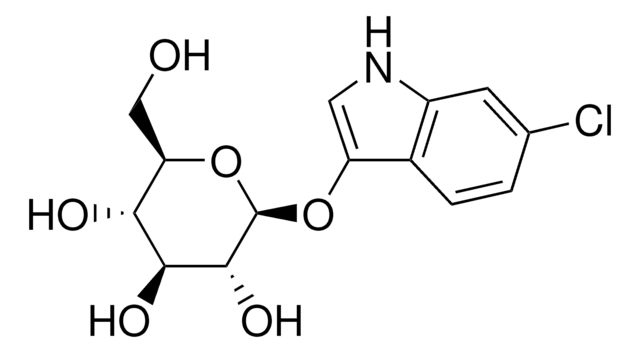199524
Chlorophenol Red
indicator grade
Synonyme(s) :
3′,3′-Dichlorophenolsulfonaphthalein
About This Item
Produits recommandés
Qualité
indicator grade
Niveau de qualité
Forme
powder, crystals or chunks
Couleur
dark brown
pH
4.8-6.7, yellow to violet
Solubilité
95% ethanol: 10 mg/mL
λmax
572 nm
ε (coefficient d'extinction)
≥12000 at 295-301 nm in 0.1 M NaOH
≥45000 at 573-579 nm in 0.1 M NaOH
≥5000 at 368-374 nm in 0.1 M NaOH
Application(s)
diagnostic assay manufacturing
hematology
histology
Température de stockage
room temp
Chaîne SMILES
Oc1ccc(cc1Cl)C2(OS(=O)(=O)c3ccccc23)c4ccc(O)c(Cl)c4
InChI
1S/C19H12Cl2O5S/c20-14-9-11(5-7-16(14)22)19(12-6-8-17(23)15(21)10-12)13-3-1-2-4-18(13)27(24,25)26-19/h1-10,22-23H
Clé InChI
WWAABJGNHFGXSJ-UHFFFAOYSA-N
Vous recherchez des produits similaires ? Visite Guide de comparaison des produits
Catégories apparentées
Actions biochimiques/physiologiques
Mention d'avertissement
Warning
Mentions de danger
Conseils de prudence
Classification des risques
Eye Irrit. 2 - Skin Irrit. 2 - STOT SE 3
Organes cibles
Respiratory system
Code de la classe de stockage
11 - Combustible Solids
Classe de danger pour l'eau (WGK)
WGK 3
Point d'éclair (°F)
Not applicable
Point d'éclair (°C)
Not applicable
Équipement de protection individuelle
dust mask type N95 (US), Eyeshields, Gloves
Faites votre choix parmi les versions les plus récentes :
Déjà en possession de ce produit ?
Retrouvez la documentation relative aux produits que vous avez récemment achetés dans la Bibliothèque de documents.
Les clients ont également consulté
Notre équipe de scientifiques dispose d'une expérience dans tous les secteurs de la recherche, notamment en sciences de la vie, science des matériaux, synthèse chimique, chromatographie, analyse et dans de nombreux autres domaines..
Contacter notre Service technique


